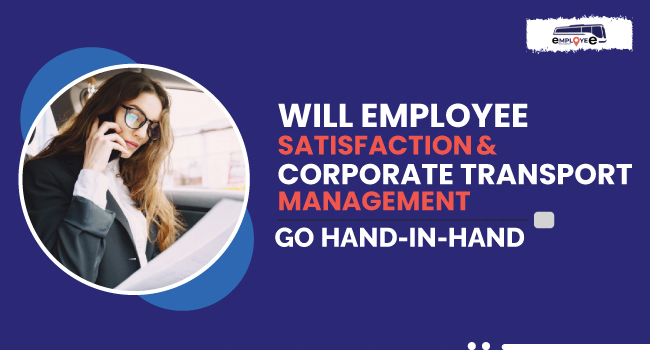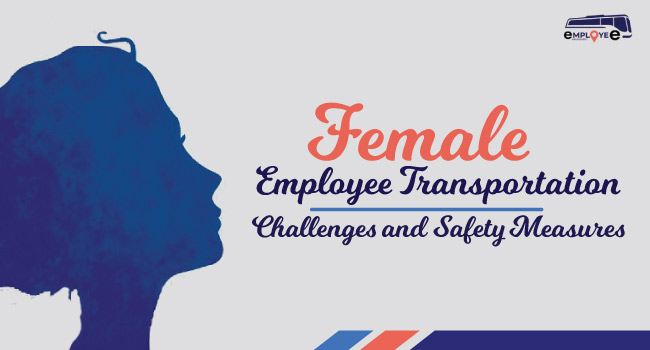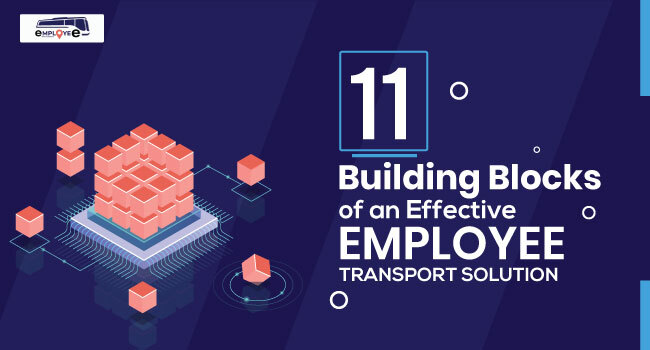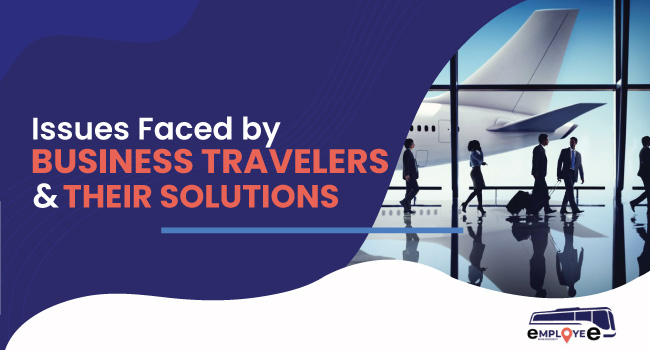Will Employee Satisfaction and Corporate Transport Management Go Hand-in-Hand
September 15th, 2020

Job satisfaction is essential for employees to contribute to the growth of any organization. Satisfied employees remain motivated and hence the employee turnover will be very low. All employers are faced with the challenge of increasing employee job satisfaction levels with corporate transport management so that their businesses continue to enjoy a competitive advantage.
According to a survey carried out by the Conference Board, only 45 percent of the employees in America are satisfied with their current jobs. In over 22 years of the survey, this is by far the lowest level.
Changing customer demands have placed immense pressure on employers like never before. Employers have to maintain productivity, profitability, and keep their workforce satisfied and engaged with their jobs. Businesses that fail to focus on employee job satisfaction are at the risk of losing talented individuals to their competitors.
Read Also: Say Hello to Optimized Employee Transport Management: Here’s Why!
Of course, employee satisfaction is not limited to compensation alone. A salary raise or a new perk will improve employee contentment, but there are other aspects that organizations need to take into account.
Giving More Control to Employees
An employee’s happiness is dependent on the amount of control he/she has over his/her life. As such, it pays for employers to look for ways and means to give more control over their schedules, work habits, and/or environment to their employees.

For example,
most employees prefer to work for employers that offer flexible time schedules. This is because today’s employees have to deal with demanding schedules outside of their work. Many people, therefore, prefer to work with a boss who appreciates work-life balance. This is to say that customized schedules help to improve employee satisfaction.
Easing Commuting Stress
A survey carried out by the Census Bureau in the US showed that more than 86 percent of the workers above 16 years drive to work. They either drive alone or use carpooling. Bad commutes are one of the major sources of unhappiness. People feel frustrated, stressed, and powerless.
Therefore, employers must consider ways to reduce commuting stress. Some of the options include staggering work times to help them avoid heavy traffic. By reviewing the work start and end times employers can determine the specific times as well as the number of employees needed during those times.
Additionally, it makes sense for organizations to review their late arrival policies. If people who arrive late are severely reprimanded, they will experience more stress, especially if they have a bad commute. This affects their productivity and attitude towards the organization.
Employee Transport Vehicle Fleet
Organizations wherein people work in dynamic shifts, need to meet clients, or achieve project deadlines often have fleets of vehicles. This is to avoid wasting a significant amount of time in finding public transport or waiting for pickups whenever they have to commute for office work.
Read Also: Employee Transportation Software Facts to Check Before You Choose
Waiting in queues for long periods or having no information as regards the arrival of the pickup vehicle often causes anxiety and worries to employees. This, in turn, affects their productivity. That’s why many organizations maintain fleets of different types of vehicles for picking up and dropping off employees to and from the workplace and for other work-related commutes.
Though flexible work schedules and telecommuting have been implemented in many companies around the world to fix the commuting problems, the average commute time has only increased over the past few years.
According to research studies across 1,360 cities in as many as 38 countries, traffic congestion is a common phenomenon. On average, drivers spend 9 percent of their travel time, driving at just 14.4 kilometers per hour (8.9 miles per hour) because of traffic congestion. It does not matter whether an individual is driving his/her car or traveling as a passenger, traffic congestion increases the commute time.
In the United States of America, by far the most developed country in the world, the average time for a one-way commute is about 26.1 minutes. In India, people spend 7 percent of the day to reach their respective offices and in Europe, the commute time has become such a pressing issue that laws for compensating workers for their official travel time are being considered.
Apart from affecting employees, commute hampers business as follows:
• Missed Workdays
• Difficulty in Hiring
• High Attrition Rates
• Increased Error Rates
• Less Productivity
• Revenue Loss
Investing In Technology For Employee Transport
Organizations that maintain fleets of vehicles for employee transport need to invest in technology not only to enhance employee satisfaction but also to improve their bottom line.
This is because transport automation systems help organizations overcome challenges and provide seamless solutions for facilitating employee transportation. Technologies such as Artificial Intelligence, cloud computing, and automation offer a set of benefits to employees and organizations. Some of the key benefits are mentioned below.
Enhanced Employee Safety
One of the key benefits offered by company-sponsored transport systems is the security and safety of employees, especially women. Transport automation systems often come with security features such as built-in panic buttons, SOS calls, real-time vehicle tracking, driver profiles, and number masking.

These systems also come with one-click options so that employees can notify the employers when they board cabs and/or reach their destination. Thus, technology enables organizations to ensure the utmost security to their employees and avoid untoward incidents which often damage an organization’s reputation.
Increased Employee Productivity
Technology-based corporate transport management systems contribute a great deal toward enhancing employee satisfaction by eliminating commuting stress.
Such systems resolve issues such as the late arrival of employees at the workplace by streamlining cab pick-ups or multiple pick-ups from locations outside the shortest route. This contributes to improving employee productivity.
Automated transport management systems employ innovative technologies to predict the number of employees traveling on a specific route by factoring in cancellations and identify the least traffic as well as shortest routes depending on the time of the day. Employees who reach on time to and from work enjoy better work-life balance.
Monitoring Driver Behavior
Corporate transport management systems allow companies to incorporate driver profiles into their database so that detailed information about them can be easily accessed. Besides, these systems come with an efficient feedback system.
Read Also: Role of Geofencing in Employee Transportation
Employees can rate drivers and leave comments as regards their driving skills and behavior. Further, advanced technological systems allow companies to keep track of aspects such as driving speeds and rash driving. All these features contribute to enhancing employee satisfaction & corporate transport management syncing up together.
Reduces Financial Burden
Traditional or manually-managed corporate transportation systems often incur financial losses at many levels. The main reason is ill-planned routes.
Corporate transport management systems that employ technology determine costs based on kilometers covered from point-to-point. This enables corporates to save a considerable amount of money.
Saves Human Effort
An automated corporate transport management system helps cut down labor costs and improves operational inefficiency. Automated systems enable simple rostering, fleet deployment, fleet planning, and billing services. In addition, they keep track of employee boarding/de-boarding information and driver trip-sheets through either web- or mobile-based applications.

Furthermore, the data and analytical information collected daily from employees, drivers, and transport managers enable companies to further improve efficiency and keep employees happy.
Conclusion
Companies that focus on reducing the commute stress of their employees will have happier people working for them. They will be more productive and contribute to the growth of the organization. As such, employee satisfaction and corporate transport management always go hand-in-hand.





